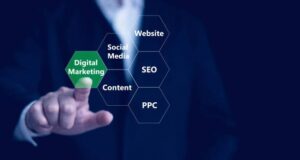On-Page SEO: The Ultimate Guide
In the ever-evolving digital landscape, search engine optimization (SEO) is crucial for driving organic traffic to your website. While off-page SEO focuses on external factors like backlinks, On-Page SEO centers on optimizing elements within your website to improve search engine rankings and enhance user experience. This comprehensive guide provides an in-depth look at On-Page SEO, offering practical tips, real-world examples, and actionable advice for SEO specialists, content creators, web developers, business owners, and digital marketers seeking to boost their online visibility.
Introduction: Optimizing Your Website’s Foundation
On-Page SEO is the foundation of any successful SEO strategy. It involves fine-tuning various aspects of your website’s content and HTML source code to make it more appealing to both search engines and users. By mastering On-Page SEO, you can improve your Search Engine Ranking and drive significant Website Traffic Growth. This SEO Guide will equip you with the knowledge and tools to optimize your website effectively.
What is On-Page SEO? A Definitive Overview
On-Page SEO refers to the practice of optimizing individual web pages to rank higher in search engine results pages (SERPs) and attract more relevant traffic. It encompasses a range of techniques that focus on optimizing content, HTML tags, page structure, and user experience. This SEO Optimization guide will delve into the specific elements you need to consider.
Key On-Page SEO Elements
Here are the core elements of On-Page SEO that you need to optimize:
-
Title Tags:
- The title tag is an HTML element that specifies the title of a web page. It’s displayed in search engine results and browser tabs.
- Best Practices: Write unique, compelling title tags for each page, incorporating relevant keywords and keeping them concise (under 60 characters).
- Example: For a blog post about “Best Hiking Boots for Women,” a good title tag would be “Best Hiking Boots for Women: Top Picks for Comfort & Durability.”
-
Meta Descriptions:
- The meta description is an HTML attribute that provides a brief summary of a web page. It’s displayed below the title tag in search engine results.
- Best Practices: Write compelling meta descriptions that accurately reflect the page’s content, entice users to click, and include relevant keywords (under 160 characters).
- Example: For the hiking boots blog post, a good meta description would be “Discover the best hiking boots for women, offering superior comfort, durability, and support for all your outdoor adventures. Find your perfect pair today!”
-
Header Tags (H1-H6):
- Header tags (H1-H6) are HTML elements used to structure content and create a hierarchy of headings. The H1 tag is the most important and should typically be used once per page.
- Best Practices: Use header tags to organize your content logically, incorporating relevant keywords naturally. Use only one H1 tag per page, and use H2-H6 tags to create subheadings.
- Example: The H1 tag for the hiking boots post could be “Best Hiking Boots for Women,” while H2 tags could be “Factors to Consider When Choosing Hiking Boots” and “Top Hiking Boot Recommendations.”
-
URL Optimization:
- Optimizing your URLs involves creating short, descriptive, and keyword-rich URLs that are easy to understand for both users and search engines.
- Best Practices: Use short, descriptive URLs that include relevant keywords. Avoid using long, complex URLs with unnecessary characters.
- Example: Instead of example.com/page?id=12345, use example.com/best-hiking-boots-women.
-
Content Optimization:
- Content is king in SEO. Creating high-quality, relevant, and engaging content is crucial for attracting and retaining users.
- Best Practices:
- Keyword Research: Conduct thorough keyword research to identify the terms your target audience is searching for.
- Content Relevance: Create content that is relevant to your target keywords and provides value to your audience.
- Content Length: Aim for comprehensive content that thoroughly covers the topic, but avoid unnecessary fluff.
- Readability: Use clear and concise language, break up text with headings and subheadings, and use bullet points and visuals to improve readability.
-
Image Optimization:
- Optimizing images involves compressing image file sizes, using descriptive file names, and adding alt text to images.
- Best Practices:
- Compress Images: Reduce image file sizes without sacrificing quality to improve page load speed.
- Descriptive File Names: Use descriptive file names that include relevant keywords.
- Alt Text: Add descriptive alt text to images to provide context for search engines and users with visual impairments.
-
Mobile Optimization:
- With the majority of web traffic coming from mobile devices, ensuring your website is mobile-friendly is essential.
- Best Practices: Use a responsive design that adapts to different screen sizes, optimize page load speed for mobile devices, and ensure easy navigation on mobile.
-
Page Speed Optimization:
- Page speed is a crucial ranking factor. Slow-loading pages can lead to higher bounce rates and lower search engine rankings.
- Best Practices: Optimize images, minify CSS and JavaScript files, leverage browser caching, and use a content delivery network (CDN).
-
Internal Linking:
- Internal linking involves linking between different pages within your website. It helps users navigate your site and distributes link equity throughout your website.
- Best Practices: Link to relevant pages within your content using descriptive anchor text.
-
User Experience (UX):
- Providing a positive user experience is crucial for both SEO and user satisfaction.
- Best Practices: Ensure your website is easy to navigate, has a clear structure, and provides valuable content.
These elements are fundamental to SEO Best Practices and effective SEO Optimization.
On-Page SEO Techniques for Content Optimization
Here are some specific SEO Techniques for optimizing your content:
- Keyword Research: Use keyword research tools to identify relevant keywords and search terms.
- Latent Semantic Indexing (LSI) Keywords: Incorporate related keywords and synonyms to provide context and improve search engine understanding.
- Content Freshness: Regularly update your content to keep it relevant and engaging.
These techniques are essential for effective Content Optimization.
Real-World Examples of On-Page SEO
- A blog post about “Best Coffee Makers” uses relevant keywords in the title tag, meta description, header tags, and content. Images are optimized with descriptive file names and alt text. Internal links point to related articles about coffee beans and brewing methods.
- An e-commerce product page for a specific coffee maker includes detailed product descriptions, high-quality images, customer reviews, and related product recommendations.
These examples illustrate effective Website SEO in action.
Actionable Advice for Different Audiences
- SEO Specialists: Stay up-to-date with the latest algorithm updates and best practices.
- Content Creators: Focus on creating high-quality, relevant, and engaging content that targets specific keywords.
- Web Developers: Ensure websites are technically sound, mobile-friendly, and optimized for page speed.
- Business Owners: Understand the importance of On-Page SEO and work with SEO professionals to optimize their websites.
- Digital Marketers: Integrate On-Page SEO into their overall digital marketing strategies.
This advice offers valuable guidance for different professionals involved in SEO Strategies.
Tools for On-Page SEO
Various tools can assist with On-Page SEO, including:
- Google Search Console: Provides insights into how Google sees your website.
- Google Analytics: Tracks website traffic and user behavior.
- Yoast SEO (WordPress Plugin): Helps optimize content and meta tags.
- SEMrush, Ahrefs: Provide comprehensive SEO analysis and keyword research tools.
Using these tools can significantly enhance your SEO efforts.
Building a Strong Online Presence Through On-Page SEO
On-Page SEO is a crucial component of any successful digital marketing strategy. By optimizing the elements within your website, you can improve your Search Engine Ranking, attract more relevant traffic, and enhance user experience. This comprehensive SEO Guide has provided valuable insights into On-Page SEO and SEO Best Practices. By implementing these SEO Techniques and focusing on Content Optimization, you can achieve significant Website Traffic Growth and establish a strong online presence for your business. Remember, On-Page SEO is an ongoing process. Regularly reviewing and updating your website’s optimization efforts is essential for maintaining and improving your search engine rankings and achieving long-term online success.






